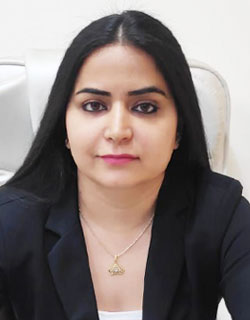Knee pain, whether from injury or arthritis, can
significantly impact your quality of life. Many people consider knee
replacement when non-surgical treatments fail to provide relief. But then comes
the challenge of deciding between partial or total knee replacement surgery in
Delhi.
The decision depends on various factors, including the
extent of damage to your knee, age of the patient, activity level, and overall
health. Both procedures have their advantages, and understanding the
differences between partial knee replacement (PKR) and total knee replacement
(TKR) will help you make an informed decision.
What is Partial Knee Replacement (PKR)?
A partial knee replacement is a procedure where only one
side of the knee joint is replaced. This surgery is an excellent option for
patients who have damage confined to a specific part of the knee while the
other portions remain healthy. Apartial knee replacement addresses the damaged
area only without replacing the entire joint.
What Are the Advantages of Partial Knee Replacement?
1.
Preservation of healthy tissue
2.
Faster recovery
3.
More natural knee movement
Who Qualifies for Partial Knee Replacement?
Historically, only 5-10% of patients were considered
candidates for partial knee replacements, as the procedure is more technically
challenging for surgeons. But advancements in robotic-assisted surgeries and
improved surgical instruments have made the procedure more precise and
eligible. Today, approximately 25% of patients with knee pain may be suitable
candidates for partial knee replacement.
Who Is Not Eligible for a Partial Knee Replacement?
Patients with the following conditions are generally not eligible
for a partial knee replacement:
1.
Severe arthritis on both sides of the knee
2.
Significant bow-leggedness or knee deformity
3.
Severely limited mobility
What is Total Knee Replacement (TKR)?
This is a more comprehensive procedure in which the entire
knee joint is replaced. The total knee replacement surgeryis recommended for
individuals whose knee joints are damaged in multiple compartments or whose
conditions cannot be effectively treated with a partial replacement.
What Are the Advantages of Total Knee Replacement?
Since all parts of the knee are replaced, there is less
chance of future arthritis developing in the untreated sections of the knee.
Full knee replacements generally have lower revision rates
than partials, as all areas of the joint are replaced, reducing the likelihood
of wear and tear in untreated sections.
What is the Ideal Age for Partial vs. Full Knee Replacement?
Previously, younger and more active individuals were advised
for total knee replacements due to concerns over longevity and the risk of
revision surgeries. However, with advancements, younger patients can now
benefit from knee replacements, especially partial knee replacements.
How Long Do Partial vs.Total Knee Replacements Last?
The longevity of both partial and total knee replacements
can vary depending on factors such as the patient’s age, activity level, and
overall health. Some studies show that both types of surgery have similar
long-term success rates. However, total knee replacements have a lower rate of
revision surgeries due to the complete replacement of the joint.
What Is the Recovery Period for a Partial vs. Total Knee
Replacement?
One of the most significant advantages of partial knee
replacement surgery is the shorter recovery period. Since the procedure is less
invasive and preserves more of the knee’s natural structure, patients often
experience:
1.
Less pain and swelling
2.
Faster recovery
3.
Smaller incision
Recovery from total knee replacement surgery can take
anywhere from 2 to 3 months. Whereas the timeline for partial knee replacements
is generally faster.
Why Choose Partial or Total Knee Replacement in Delhi?
Whether you opt for a partial or total knee replacement
depends on your specific situation. Both surgeries offer long-lasting relief
from knee pain and the ability to return to an active lifestyle. The most
important is working with an experienced Joint Replacement Surgeon in Delhi who
can help you determine the best option based on your individual needs.
Why Book an Appointment with Dr. Anant Kumar Tiwari?
If you’re searching for the Best Partial Knee Replacement
Surgery in Delhi or considering a Total Knee Replacement Surgery in Delhi, Dr.
Anant Kumar Tiwari is your top choice. With extensive experience in both
procedures and a reputation as the best Joint Replacement Surgeon in Delhi, Dr.
Tiwari offers personalized care tailored to your condition, resulting in faster
recovery times and top results.
Book your consultation today to explore your options for a
healthier, more active life!
Tags: Best Partial Knee Replacement Surgery in Delhi, Full knee replacements , Total Knee Replacement Surgery in Delhi, Orthopaedic Surgeon Delhi









